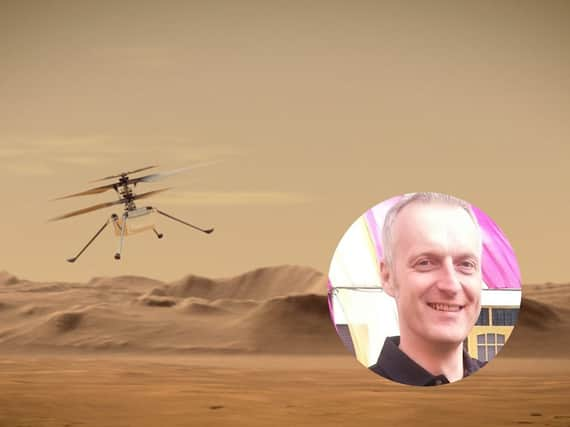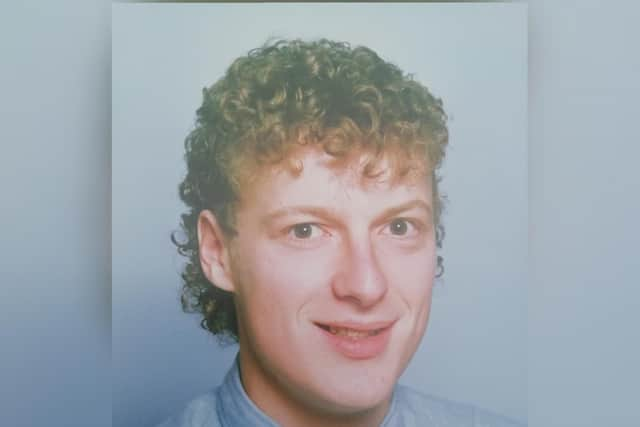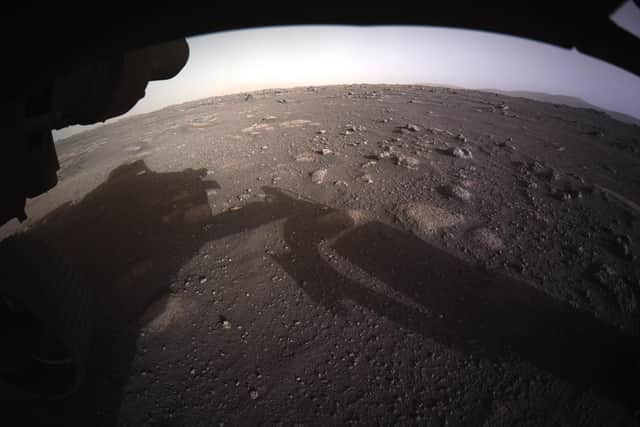Rothwell man's work is out of this world as he plays role in Mars mission


Millions of miles away a tiny helicopter is waiting to take the first ever powered flight on another planet - and a man from Rothwell has played a part.
Dr Iain Botterill helped design a chip being used in the Ingenuity drone, which landed on Mars on February 18 in the underbelly of NASA's Perseverance rover.
Advertisement
Hide AdAdvertisement
Hide AdThe 52-year-old, who went to what is now Montsaye Academy, worked on the Qualcomm Snapdragon processor which powers many Android smartphones.


And the chip is now also on the Red Planet in the autonomous Ingenuity rotorcraft, which will attempt to make history in the spring.
Proud mum Isobel, 80, said: "I imagine that when he designed the chip he had no idea it was going to end up on Mars!"
Iain grew up in Rothwell and attended the town's infant and junior schools as well as going to the youth club at the methodist church.
Advertisement
Hide AdAdvertisement
Hide AdHe went on to Montsaye in Greening Road, leaving in 1987 and going to Brunel University to study electrical and electronic engineering. After taking an initial four-year sandwich course, sponsored by British Timken in Northampton, he stayed for a further three years for his PhD.


Both Iain and his brother Neil, 49, were bright sparks with Neil going on to complete a PhD in civil engineering.
But Isobel said she doesn't know where they got their scientific minds - after she had a career in occupational therapy with their father Alan, 84, teaching religious studies and English at Henry Gotch Secondary School and Weavers School.
The Rothwell woman said: "Iain was always good at maths and science, as was his brother - they were both very academic. I always knew that he was quite good on the science side of things.
Advertisement
Hide AdAdvertisement
Hide Ad"When they were young we bought them a BBC computer which is still in our garage.
"They spent a lot of time on it playing games and we never understood how it worked."
In the late 1990s Iain moved to America and was headhunted for a firm in San Francisco. He now lives in San Mateo, just to the south of popular Californian city, and works at Qualcomm as a hardware development engineer.
The chip he helped design is now in the 1.8kg Ingenuity drone which landed on the Jezero Crater last week having set off in July.
Advertisement
Hide AdAdvertisement
Hide AdProvided it survives the bone-chilling conditions on Mars - with temperatures dipping as low as -90C - Ingenuity will attempt up to five flights in the spring in a 30 Martian day window, equivalent to 31 days on Earth.
For the first flight it will take off a few feet from the ground before hovering in the air for about 20 to 30 seconds and landing. It will be the very first powered flight on another planet and in Mars' extremely thin atmosphere. If successful it will attempt additional experimental flights, incrementally increasing the distance and altitude.
Scientists say that should Ingenuity fly the feat would be a 'Wright brothers' moment, replicating the historic achievement of Earth's first powered, controlled flight. Its technologies could also enable other advanced vehicles that might be part of future robotic and human missions to Mars.
And if NASA's most ambitious Mars mission works, Rothwell's Iain will have played his part.
Advertisement
Hide AdAdvertisement
Hide AdIsobel said news of his achievement had led to a big reaction on social media, with congratulatory messages from his old school pals and former teacher George Hughes, who said he was "a lovely lad to teach".
Isobel said: "We are very proud of him and his brother and we are quite amazed by the interest it's had on social media.
"I just thought one or two people in Rothwell might be interested and the response has been amazing.
"I am sure his education at Montsaye was very important and his teachers played a role in his success."
Advertisement
Hide AdAdvertisement
Hide AdIain's role is not the first link between north Northamptonshire and the fourth planet from the sun.
A crater on Mars, which was discovered in the late 1970s, was named after nearby Corby. Legend has it that this was after a famous transcript of a conversation in June 1969 between the crew of the Apollo 11 mission and mission control, where world news was relayed to the crew.
Part of the news was that "in Corby, an Irishman named John Coyle won the World's Porridge Eating Championship by consuming 23 bowls of instant oatmeal in 10 minutes".
The reply from Apollo 11 was: "I'd like to enter (Buzz) Aldrin in the porridge eating contest next time, he's on the 19th bowl. Roger."